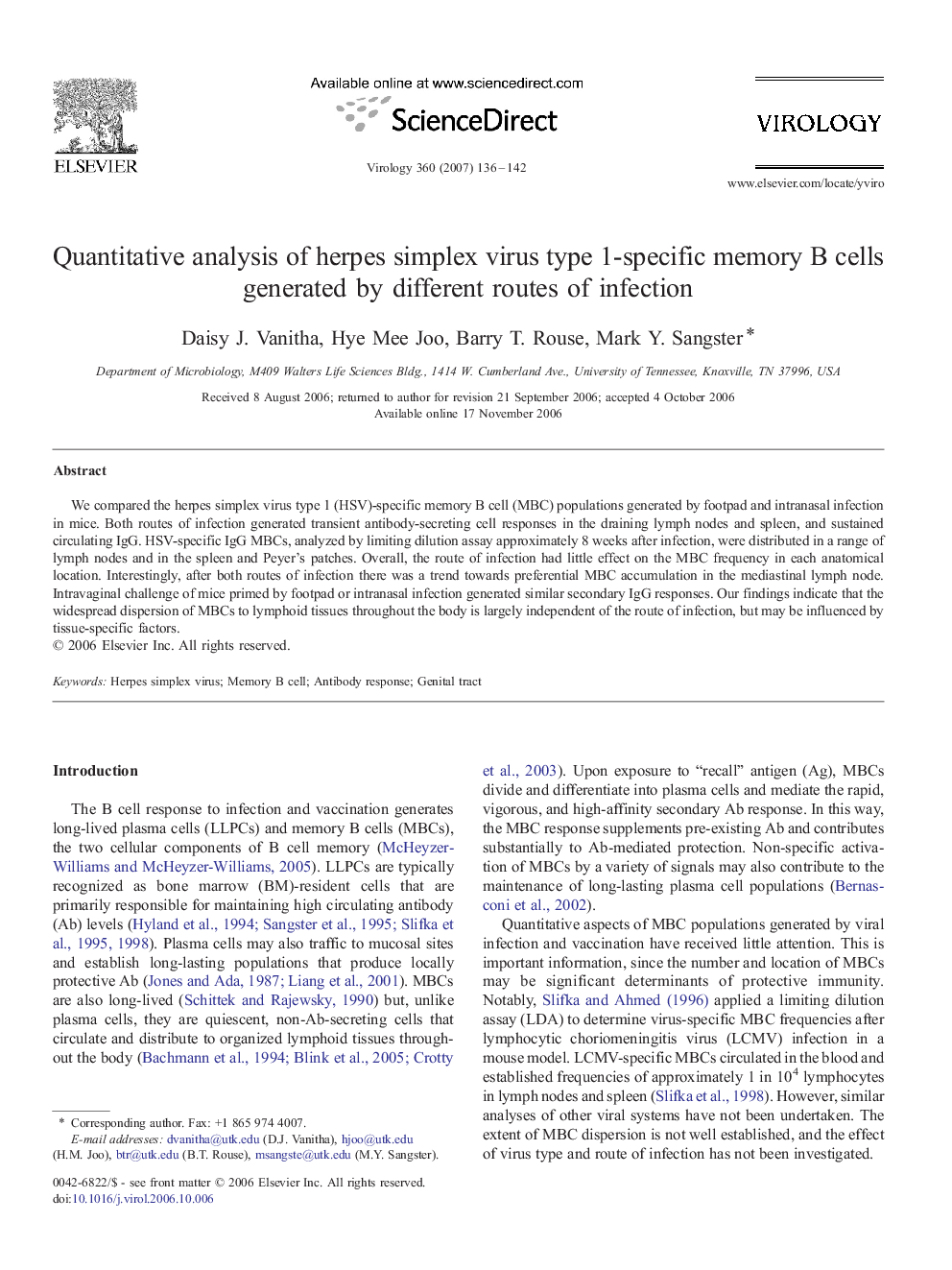| Article ID | Journal | Published Year | Pages | File Type |
|---|---|---|---|---|
| 6141837 | Virology | 2007 | 7 Pages |
Abstract
We compared the herpes simplex virus type 1 (HSV)-specific memory B cell (MBC) populations generated by footpad and intranasal infection in mice. Both routes of infection generated transient antibody-secreting cell responses in the draining lymph nodes and spleen, and sustained circulating IgG. HSV-specific IgG MBCs, analyzed by limiting dilution assay approximately 8Â weeks after infection, were distributed in a range of lymph nodes and in the spleen and Peyer's patches. Overall, the route of infection had little effect on the MBC frequency in each anatomical location. Interestingly, after both routes of infection there was a trend towards preferential MBC accumulation in the mediastinal lymph node. Intravaginal challenge of mice primed by footpad or intranasal infection generated similar secondary IgG responses. Our findings indicate that the widespread dispersion of MBCs to lymphoid tissues throughout the body is largely independent of the route of infection, but may be influenced by tissue-specific factors.
Related Topics
Life Sciences
Immunology and Microbiology
Virology
Authors
Daisy J. Vanitha, Hye Mee Joo, Barry T. Rouse, Mark Y. Sangster,
